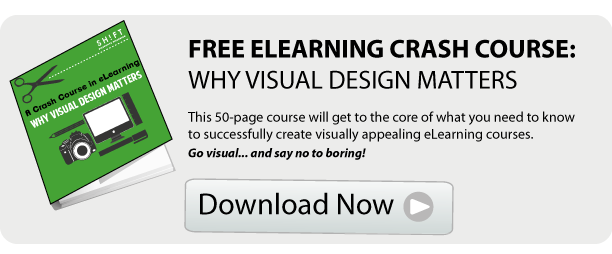We know that creating learning content that's clear and concise is a no-brainer. But creating content that influences, motivates, engages and compells is not often a simple task to accomplish. The good news is you don’t have to be an expert to craft effective eLearning content. You only have to understand the basics well and execute it.
But what are the basics anyway? In terms of eLearning, compelling content is one that grabs and holds the attention of your learners. It naturally makes learners motivated to finish what they’ve started. Above all, compelling content generates learner commitment.
Now here’s the basics:

Know Who Your Learners Are
Don’t be content with vague ideas of who your learners might be. Will you teach the course to people interested in the psychology of colors? That’s a good start but you can do better. How about knowing more about your learners? You can, for instance, identify their age, occupation, lifestyle, reading habits and personal goals. Once you get to know who your learners are, it’s easier to tailor your content to your audience. Your learners can also freely connect with your lessons even if your knowledge on the topic is limited.
Package Your Content Properly
Design or package your content in a way that pleases the eyes. Most companies have valuable and meaningful content, but if it’s in the right format or "package" it will not be interesting or for today’s highly visual learners.
You have to help learners scan the page (because they are going to anyway). Break long paragraphs through numbered lists, bullets and section headers so that learners can quickly glance at the main points of your article. Use readable fonts and white spaces for an optimal learning experience. Use text formatting to highlight points that are important.
Write Like a Journalist
Journalists, in writing the news, start with the 5 S—who what, where, when and why—and the how.
Once you get all these details, write down the lead or introduction. Important facts come first, supporting facts come next. Finally, wrap up the section with a conclusion.
Brevity is best
The writer’s dictum, “keep it short and simple,” works in eLearning too. Cut redundant phrases and omit long paragraphs. Three to five sentences per paragraph will do. This prevents you from confusing or overwhelming learners with too difficult or technical content.
Use simpler, active sentences instead. Look for phrases you can replace with a single word. This makes it easy for your readers to consume your content. Remember, learners have limited time and attention. Get to the point and get rid of distractions.
Focus on the Problem
The alternative is to focus on the solution—on lectures or assignments or exercises. But learners won’t like a too formal or structured process like this. That’s why you should focus on the problem and present it to your learners.
A problem-based content is never rigid. Like unstructured, real-life problems, it leaves students room for discovery. They themselves will actively seek and work with content necessary to solve the problem, their problem.
This type of learning is essentially question- or inquiry-based, not answer-based. Since it actively engages learners, they’re able to remember much of the content and apply meaningful solutions in real life.
Be Interested and Inspired in Writing Content
How can you not be boring if your material is heavy on data? Here’s how. You have to be interested in what you’re writing first. If you’re bored, then learners will naturally find you boring as well. If you don’t love the content, there’s no reason for others to love it either.
So the key element in producing content that entertains, enchants and captivates readers is you, the content creator.
Entertain, Impress and Captivate
These are quite big verbs but you can start small and take your time.
Begin with a catchy course name. Then make your design appealing, consistent and user-friendly.
Next, choose a theme or style. Make it different, shocking, humorous, dramatic, or even controversial. Whatever theme you choose, avoid the conventional (and boring) just-the-facts-ma’am style.
Make it real
Your learners won’t stick around too long if your eLearning course is not aligned to their real-life context. When possible, give learners concrete facts to illustrate your points. Use statistics to back up important data. Make use of real-life examples, counter-examples, common pitfalls, and realistic dialogue between avatars that represent real workers in your company.
Remember, quality trumps all.
What learners need most today is quality eLearning material. After all, more is not always better. Instead of drowning students in a sea of content, keep stick to one idea and help them understand it deeply.




